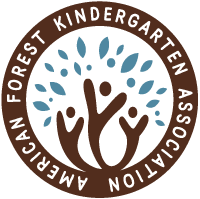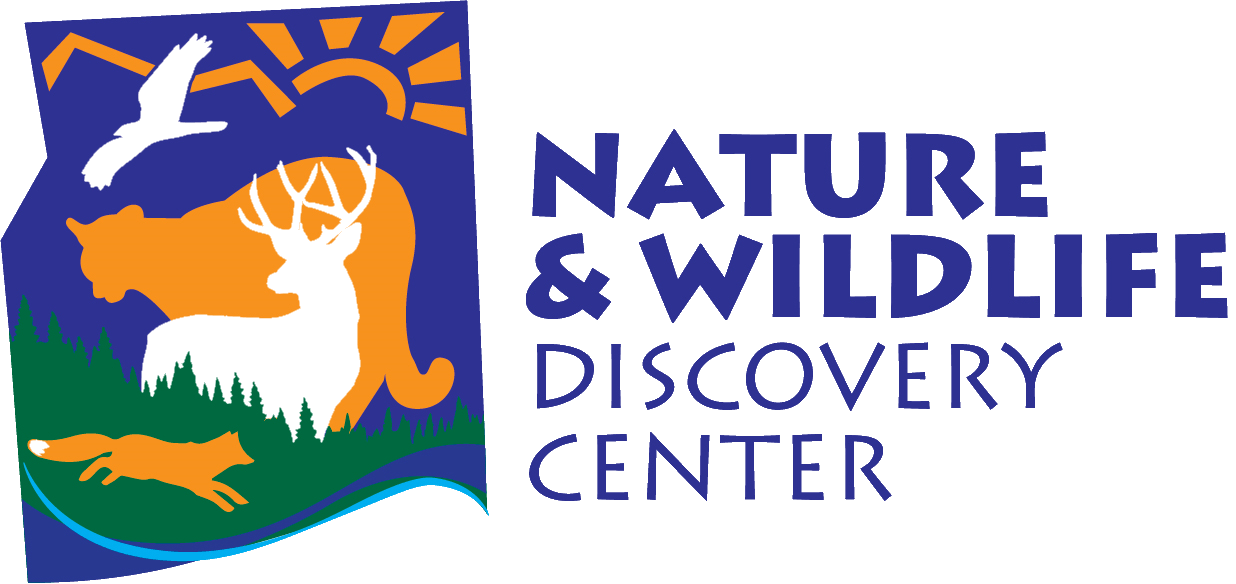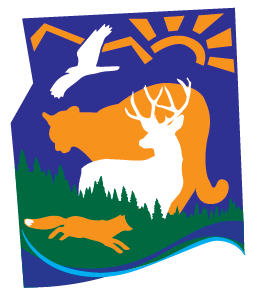
What is a "Nature School"?
There is a new movement underway in the field of early childhood education. With its roots in Europe, followed by their emergence in the Pacific Northwest and New England, Nature Preschools and Forest Kindergartens are now found in many locations throughout the US.
The reasons for the Nature Preschools and Forest Kindergartens are many. There is no denying the fact that the prevalence of various forms of mass-produced technology has impacted our society on many levels. One such impact is the amount of time that today’s children spend “plugged-in” to one form of electronic device or another. What is often lost through all this tech-driven time is spending time outdoors. This trend has many negative outcomes associated with it – poor physical health, increased prevalence of many diseases, mental health problems, and a lack of understanding of or interest in the natural environment, to name a few. These impacts are not limited to adults and older children. In fact, lives impaired by such an enmeshment with technological gadgetry often begin in early childhood.
Among the reasons for the Nature Preschool & Forest Kindergarten movement is the desire to counter what is sometimes called the indoor-ification of early childhood. What comes along with indoor-ification – a preoccupation with academics and testing; over-fascination with and over-use of technology; less, or no time for play, recess, art and music; the increased use of worksheets… is why Nature Schools are becoming more and more popular among parents and early childhood advocates.
All young children ages 4 through 7 — big, small, short, tall, outgoing, shy — are welcome at Earthkeeper Nature School!
Earthkeeper Nature School curriculum centers on the emotional, social, physical, self-help and academic development of the child. We use nature and the outdoors as the focus of our program, integrating nature-awareness, science, music, arts, mathematics, language arts, reading, and skill work into a vibrant curriculum. Through experience-based learning, we seek to help children gain confidence in themselves and a love for the natural world around them, supporting the strong excitement and zest for learning that is natural in the young child.
- In order to begin to read and perform other academic tasks, the children must first gather meaning from the world and develop an awareness of concepts.
- In order to gather meaning from the world, children must have many satisfying sensory and interactive experiences – they must touch, feel, smell, hear and see. Perceptual development follows. As children interpret their sensory experiences, their minds continue to develop and expand.
- Utilizing both the Mountain Campus and the River Campus as our classrooms, children receive countless opportunities to experience the wonders of Nature in a diversity of natural habitats and communities.
- Our wondrous mountain, river and prairie settings beg the children to explore and experience nature and animals at the doorstep.
If I had influence with the good fairy who is supposed to preside over the christening of all children, I should ask that her gift to each child in the world be a sense of wonder so indestructible that it would last throughout their lifetime.
Rachel Carson
Putting the “Garden” Back into Kindergarten

The original image of the kindergarten, the “children’s garden,” is fast eroding. It’s hard to see the original beauty of what kindergarten is supposed to be anymore. Children aren’t playing in the garden; instead, they’re ardently filling in bubbles on test sheets.
Many early childhood educators feel there’s a kindergarten crisis in America. The original emphasis on self-directed learning and constructive play is fast being replaced with hours of mandated reading instruction and an alienation from the outdoors. (See Washington Post article: You Won’t Believe These Kindergarten Schedules).
Earthkeeper Nature School’s educational philosophy is built on the belief shared by many influential progressive educators, including Maria Montessori, Rudolf Steiner, and Reggio Emilia: a belief that nature should play a primary role in early childhood education.
The curriculum is geared toward helping children develop habits of observation and discovery, questioning, listening and problem solving. Enveloped in an environment of fun where they feel loved and respected, they develop an awareness of the uniqueness of who they are and how to express their feelings. They learn that they are free to make choices; as long as they stay within the limits of consideration for people, things, and the natural world, they do not always have to conform. An open-ended program like ours prepares children to utilize their intellectual and creative abilities in future learning tasks, and in successfully relating to the natural world and to society.
Earthkeeper Nature School Staff are educated and experienced in both early childhood and environmental education. Each teacher brings his or her own expertise and energy to help provide a high-quality, nature-based early childhood program. We understand that preschoolers thrive on guidance from, as well as interaction with their caretakers. Response to their conversation and actions helps them develop language skills as well as increase their understanding of the world.
The heart of Earthkeeper Nature School is the natural world. Hence, we strive to spend the majority of our time outdoors at both the Mountain Park and the River Campus. Each campus also has an indoor classroom that will be utilized in the event of adverse outdoor conditions (e.g. extreme cold) that necessitate the need to be indoors.
Teaching children about the natural world should be treated as one of the most important events in their lives.
Thomas Berry
Mixed-Age Educational Environment
Where in life do we strictly segregate people into one-year age groupings? Aside from traditional school models, segregating by age is hard to find anywhere else in the community. There are a number of progressively-minded schools that recognize the many benefits to the mixed-age classroom. Earthkeeper Nature School is one of them.
The mixed-age classroom is like a family: the older students nurture the younger ones and motivate them. Most human activities involve a cycle in which a beginner learns necessary skills, perfects them through use, and hones them through mentorship. The primary value of mixed-age programs is the flexibility they provide to students whose growth is a series of sudden spurts rather than a smooth, linear progression. By serving a range of students with a larger chronological-age span, the norm becomes a wide range of abilities rather than the expectation that everyone is at the same level.
Among several examples of schools that operate with mixed-age classrooms is Pueblo’s very own Connect School, which has won numerous awards for excellence and high student achievement. The Early Learning Institute in Palo Alto, California has three classrooms for preschoolers. Instead of putting three-year-olds in one, fours in another room, and fives in the last room, they put a mix of threes, fours, and fives in all three rooms.
Read more about the value of mixed-age educational environments: 10th Street Preschool; 4 Benefits of Mixed Age Groups in the Montessori Environment.
“Will my child be ready for school?”
A common question when a parent is considering enrolling their child in a Nature Preschool is, “Will my child be ready for school?” The answer is: “Absolutely!”
Earthkeeper Nature School believes that skills such as initiative, persistence, invention, problem-solving – skills that are listed in childhood learning standards across the country – are the foundations of future success, in academics as well as in life. We also believe that self-directed outdoor play provides numerous opportunities for developing these skills.
What’s more important in early childhood education, learning your letters or learning to overcome your fear of tromping through a deep puddle? Or does learning to overcome your fear create a foundation for learning letters? From a report titled Crisis in the Kindergarten by the nonprofit Alliance for Childhood:
Long-term research casts doubt on the assumption that starting earlier on the teaching of phonics and other discrete skills leads to better results. For example, most of the play-based kindergartens in Germany were changed into centers for cognitive achievement during a wave of educational “reform” in the 1970s. But research comparing 50 play-based classes with 50 early-learning centers found that by age ten the children who had played excelled over the others in a host of ways. They were more advanced in reading and mathematics and they were better adjusted socially and emotionally in school. They excelled in creativity and intelligence, oral expression, and “industry.” As a result of this study German kindergartens returned to being play-based again.
Recent research corroborates that Nature Preschools & Kindergartens provide the ideal setting for the healthy development of the young child:
- Increasing evidence suggests that access to nature and green space provides children with a myriad of cognitive, emotional, and physical benefits, such as increased ability to concentrate, improved academic performance, reduced stress and aggression levels, and reduced risk of obesity. (Faber Taylor & Kuo, 2006; Kellert, 2005, Lieberman & Hoody, 1998; Louv, 2007; Wells & Evans, 2003)
- Research indicates that nature buffers the impact of life stress on children and helps them deal with adversity. The greater the amount of nature exposure, the greater the benefits. Nature exposure is indeed a protective factor, contributing to the resilience of children. Conversely, if nature is lacking in the lives of children, it is just one more strike against children, especially those who already face tremendous disadvantages. (Wells, N., & Evans, G., 2003)
- Statistically significant relationships were found between the use of urban open green spaces and self-reported experiences of stress – regardless of the informant’s age, sex and socio-economic status. The results suggest that the more often a person visits urban open green spaces, the less often he or she will report stress-related illnesses. (Grahn, U.A. Stigsdotter, 2004)
- Studies found that children engage in more creative forms of play, and play more cooperatively, in the green areas than in paved areas of schoolyards. (Bell and Dyment, 2006)
- Play in nature is especially important for developing capacities for creativity, problem-solving, and intellectual development. (Kellert, 2005).
- Studies indicate that proximity to, views of, and exposure to natural settings increases children’s ability to focus and enhances cognitive abilities. (Wells, 2000)
- Outdoor-based activities for young children build resilience through heightened sensory awareness, high positive expectations, and a clear and developing understanding of one’s strengths relating to accomplishment. (Breslin, 2005)
Learning outdoors is one of the best ways to create a positive and intimate bond with the natural world… They are learning all kinds of valuable principles about gravity, and texture, and shapes and colors and all the things you might expect to see in a preschool curriculum. They are just doing it outdoors and at their own pace.
Erin Kenny
Learn more about Nature Preschools/ Kindergartens
Articles:
- The Cognitive Benefits of Kindergarten in the Forest — Atlantic article on a Forest Kindergarten in Finland.
- Preschool Without Walls — A New York Times article on a Seattle area Forest Preschool.
- Reading the Landscape: Early Literacy in the Outdoor Classroom — Article on how Nature-based early childhood education better prepares children for future academic success.
Videos:

